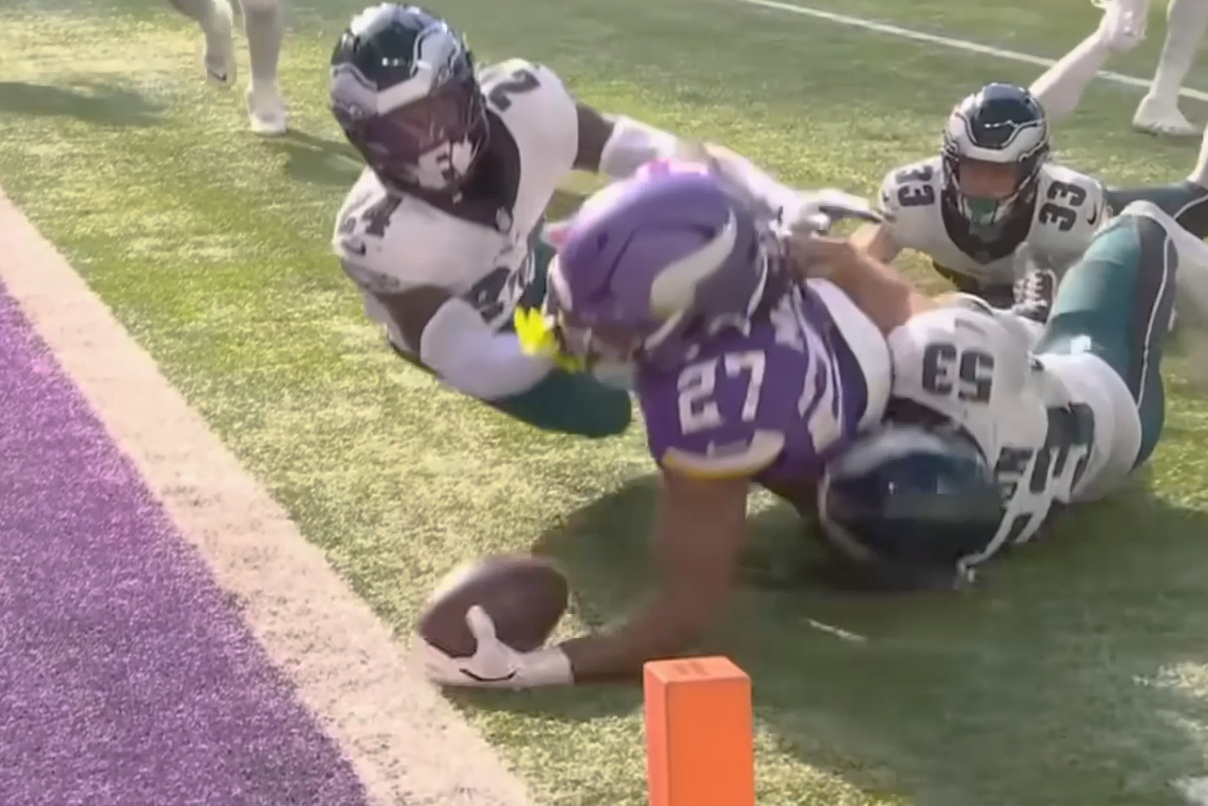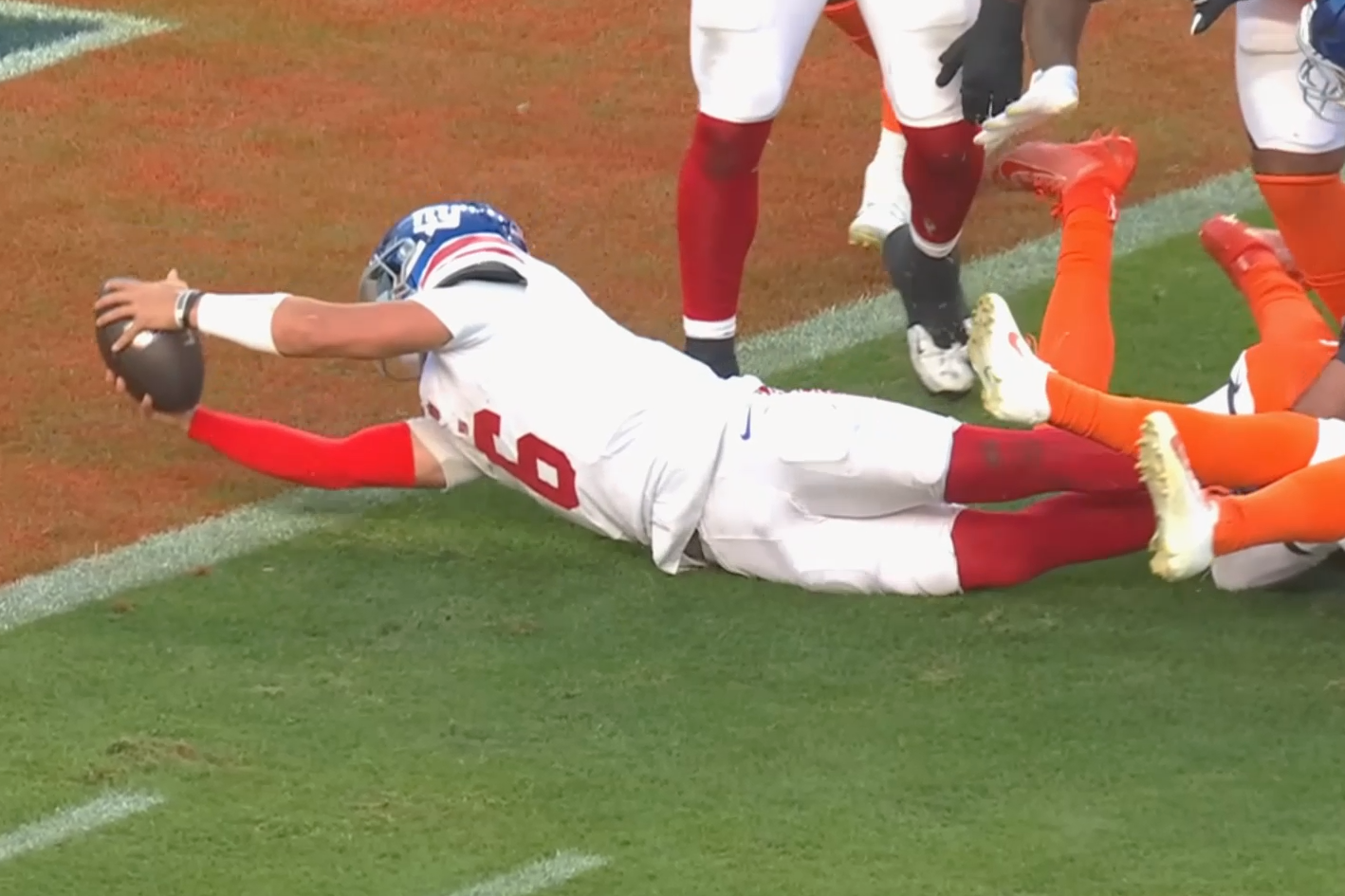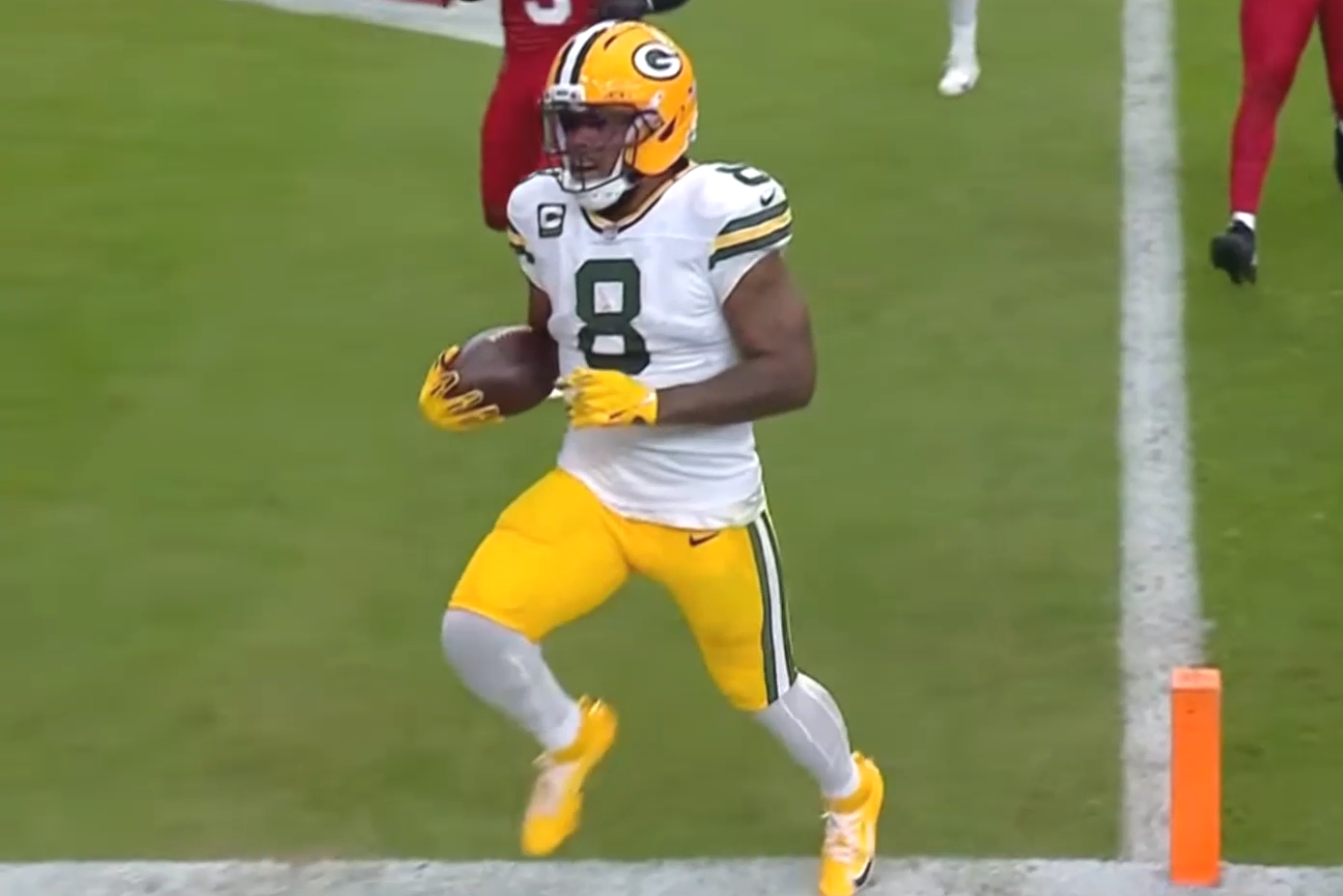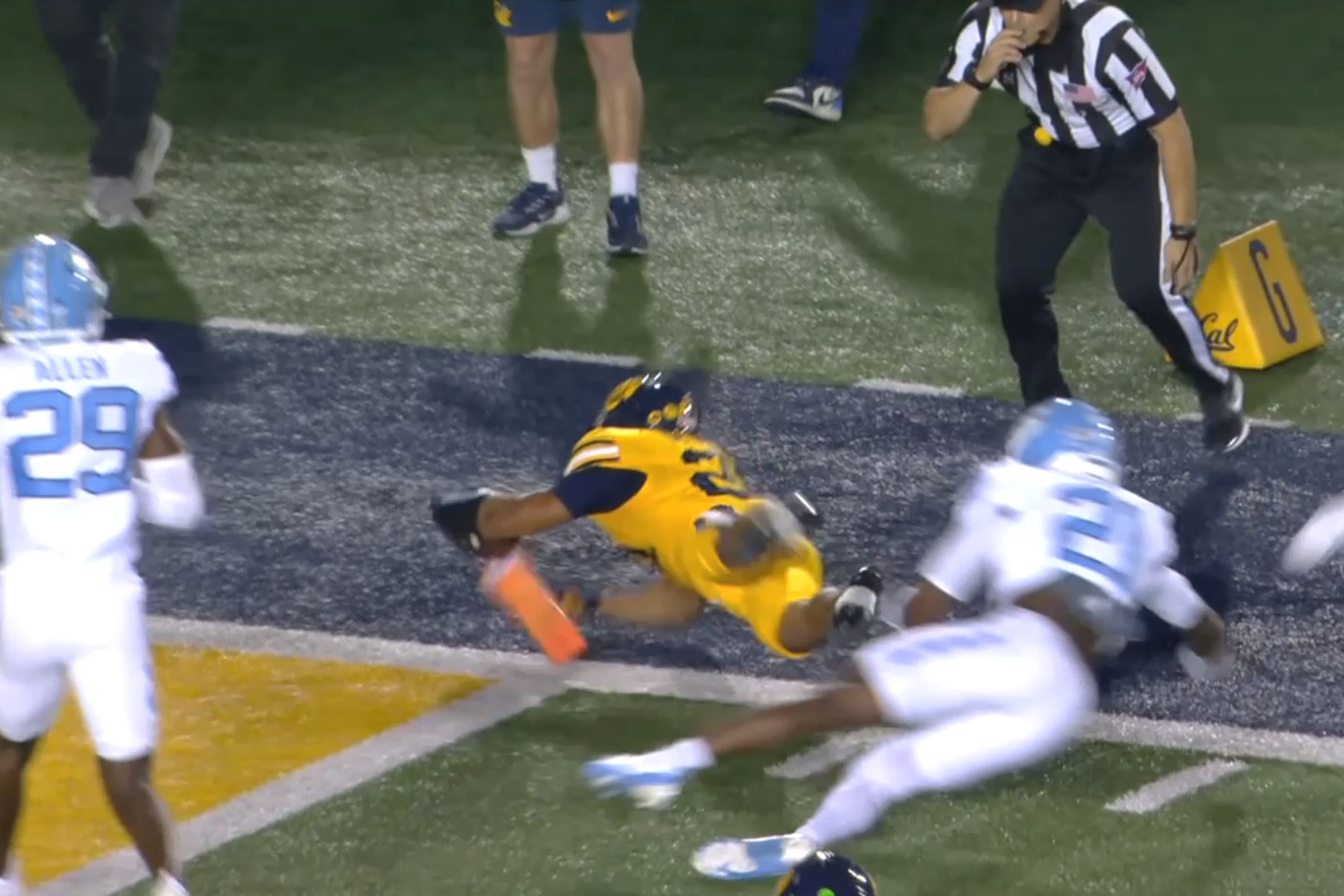15 games, Oct. 16/19/20, 2025
5566 +2/232\\
Week 7: 78 Touchdowns: 3 ATDs
PHI@MIN: Hands down
A mini essay: This week’s trio of no-touch touchdowns, all of them close calls, remind us that 1) proposing a new rule requires consistency in close-call situations, and 2) skeptics think close calls such as these prove the existing the break-the-plane rule is just fine and needs no change.
Proponents of the status quo will argue that modifying the BTP rule, as this site advocates, will cause fans a jarring, confusing adjustment to their perception of what a touchdown is and is not. Accordingly, those who are content with the break-the-plane rule would like us to fold up our high-minded concept, stuff it in our back pocket, and just shut up.
These close calls cause us to do some soul searching as we watch them. Are we just being too fussy?
Ultimately, we don’t think so. Those who endorse the break-the-plane rule tacitly give their blessing to the overt leniency it creates for the offense at the goal line. They don’t mind that the rule overwhelmingly favors ball carriers and encourages referees to dish out touchdowns as if they were free samples at Costco. They support the conviction, knowingly or not, that close enough is good enough.
Almost reach the goal line? Kinda near the end zone? Briefly wave the ball in a fraction of its airspace? Float past a pylon and make first contact beyond the goal line a foot or two out of bounds? Don’t sweat it; that’s good enough. Ignore the grousing by the defense. Here’s six points. Let’s move on.
It’s understandable why most fans do not question the break-the-plane rule (and we don’t mean to mock anyone who sides with it). It has been part of the game for decades (its origin is unknown), and watching the rule impact plays over and over has anesthetized most fans to its curious logic.
It sounds preposterous when you say it out loud: You can get credit for a touchdown without touching the end zone? Yes. Yes you can, thanks to the break-the-plane rule. You can fly over a pylon, which is 100 percent out of bounds, and land five feet out of bounds and walk away with six points? Yep, you sure can.
In this first example, Minnesota’s Jordan Mason comes within a millimeter or two of contacting the end zone with his left hand. He is so close. We don’t know if it’s possible to get any closer to the end zone and NOT make contact with it. He did, while falling to the ground, briefly wave the nose of the ball in the airspace above the goal line. So yes, he broke the plane.
Yet when he is down, his upturned fingers gripping the ball in his left hand have yet to contact the designated scoring area, i.e., the end zone, even though they are just a few blades of grass short. Again, he is so close. But he’s not in. Thus, though it makes us seem like party poopers, we would not rule this a touchdown.
Interestingly, the game officials initially ruled Mason short of the end zone. Fox announcer Adam Amin told his audience that Mason “looked to be short.” The play did not meet the eye test of what a touchdown should look like. Yet the ethereal eye of “replay assistance,” as explained by head referee Bill Vinovich, transformed Mason’s run into a touchdown.
Our recommended new rule would require ball carriers to make contact with a portion of the end zone in some minimal fashion before being ruled down. Why? This is a game built on high standings and demanding execution — e.g., landing two feet in bounds just to get credit for a catch.
A ball carrier should be expected to finish the job and touch the end zone to demonstrate that he has completed his task. When Jim Whittaker became the first American to summit Mount Everest in 1963, did he just wave his ice axe at the summit? No, he stood on it. In a contact sport such as football, physically reaching the destination — indisputably completing the mission — just makes sense.
In 2025, fans adapted to the new kickoff rule without difficulty. After witnessing our new rule in action a few times, they would adapt to it as well. Our rule revision is not perfect. But we believe it’s better than what we’ve got. Hocus Bogus Rating: 2

Video and image: Fox Sports
NYG@DEN: Again, so close
As with Jordan Mason’s run, officials initially ruled New York’s Jaxson Dart short of the end zone after his goal line lunge. Yet after a review he is awarded a touchdown for cracking the Great Invisible Plane, despite the fact his right hip, leg, and knee are down before he makes contact with the end zone.
While we admire Dart’s effort, and we understand why the play was ruled a touchdown, for all the reasons articulated above we would not consider this a score. Rating: 2

GB@AZ: Overstepping his bounds
The break-the-plane rule makes ball carriers imprecise and unconcerned about the game’s customary limits. If Green Bay’s Josh Jacobs was trying to pick up an extra yard near, say, the 30-yard line, he would have been more particular about his foot placement. But none of that matters once you sail past the goal line — land as far out of bounds as you please. Doesn’t that seem odd? Rating: 1

Video and image: Fox Sports
College: Pylon smackdown
College football provided one of the more obvious reasons why we would like to see the break-the-plane rule modified. Against North Carolina, Cal’s Jacob De Jesus takes a hit near the goal line and goes flying out of bounds.
Yet because he was able to momentarily stretch the ball into the goal line’s airspace, then clank the pylon (which is fully out of bounds), his effort is deemed worthy of six points despite never reaching the end zone. The defenders must have been thrilled. Rating: 4.5
(Note: Only NFL touchdowns are included in this site’s season-long summary.)

Video and image: ESPN
